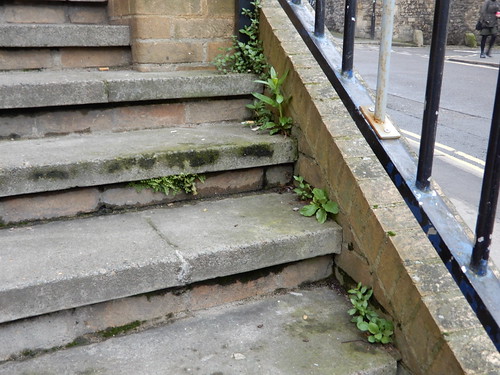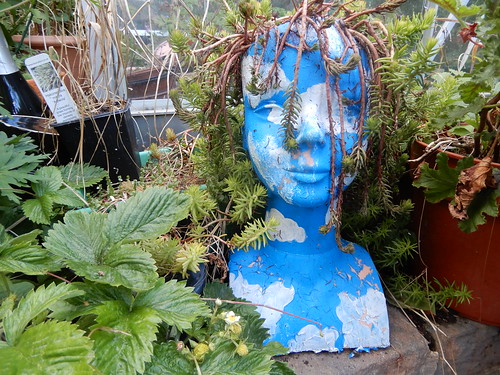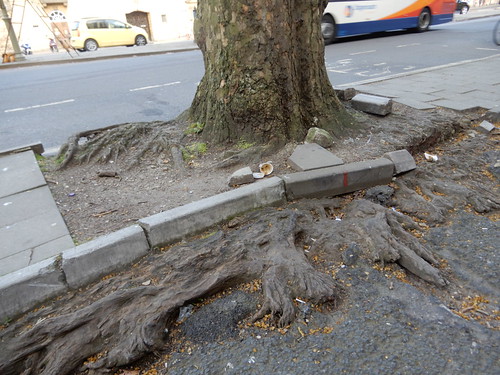I'm a big fan of freestyling ferns, though I'll be the first to admit that they do go wrong, here and there. They prise things apart, they gather soil, they set up little biomes aorund themselves.
Concrete decays over time. Brick crumbles. The ferns gather in the cracks and gaps, with sometimes spectacular, sometimes worrying results.
Leaving concrete out to get grizzled and old automatically creates green spaces (I have plenty round the house that needs the moss scrubbing off it at the moment). So the ancient clipping I had on my wall about a specially designed four-layered concrete that turned concrete green(ish) always had that slight absurdity about it...
Q: How do you make a green wall?
A: You stop weeding it
Though Dr Manso-Blanco's statement still stands: "just like trees and flowers, certain types of lichen and fungi flourish in different seasons, and no two cities have exactly the same mix of microorganisms in the air. In theory at least, bioreceptive concrete could provide buildings unique to their surroundings and which change throughout the year."
Urban spontaneous vegetation
Which brings me up to date and to the rather lovely Diversity and distribution variation of urban spontaneous vegetation with distinct frequencies along river corridors in a fast-growing city which discovers the value of abandonment most succinctly:
- Vacant lots in urban fringe harbored the most number of species.
- In communities on vacant lots of less urbanized areas, the richness of dominant species was greater, whereas in green spaces created by planted vegetation, occasional species were more diverse.
- Green space microenvironments are hospitable to some rare species.
- Such patterns, if linked to ecological and ornamental value, can provide a new perspective and nature-based solutions to urban rewilding and landscape design.















